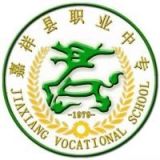如何才能制定职业教育政策和法规?

Step 1: Understand the Legal and Ethical Framework
- Familiarize yourself with relevant labor laws, regulations, and ethical guidelines.
- Identify the responsibilities of employers and employees in terms of training and development.
Step 2: Define Training Needs
- Conduct surveys or focus groups to identify skills gaps and areas for improvement.
- Analyze data on job market trends and industry requirements.
Step 3: Develop Training Programs
- Create comprehensive training programs that align with the identified skills gaps.
- Consider various delivery methods, such as in-person training, online courses, and mentorship.
Step 4: Establish Training Delivery Mechanisms
- Determine the appropriate channels for delivering training, such as company-sponsored programs, partnerships with training providers, or government initiatives.
- Ensure that training programs are accessible to all employees.
Step 5: Set Performance Standards
- Establish clear performance standards for training effectiveness and outcomes.
- Provide regular feedback and performance reviews to employees who participate in training.
Step 6: Implement and Monitor Policies
- Develop a comprehensive training policy that outlines the organization's commitment to education and development.
- Implement policies to track training progress, measure outcomes, and identify areas for improvement.
Step 7: Communicate Policy to Employees
- Provide clear and concise information about training opportunities and expectations.
- Ensure that employees understand their rights and responsibilities related to training.
Step 8: Review and Update Policies Regularly
- Regularly review and update training policies to reflect changes in the labor market, industry trends, and best practices.
- Seek feedback from employees and stakeholders to ensure that training programs remain relevant and effective.
Step 9: Seek External Support
- Consider partnering with training providers, industry associations, or government agencies for guidance and support.
- Attend conferences and workshops to stay updated on the latest training trends and best practices.























































































































